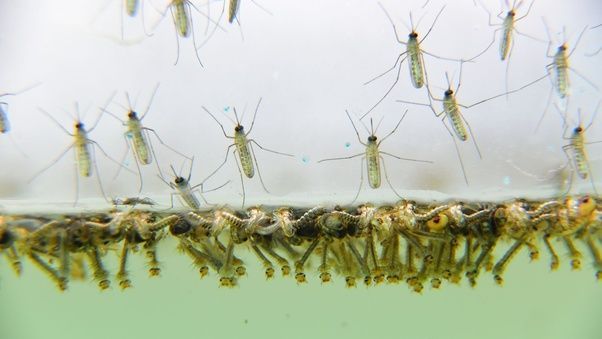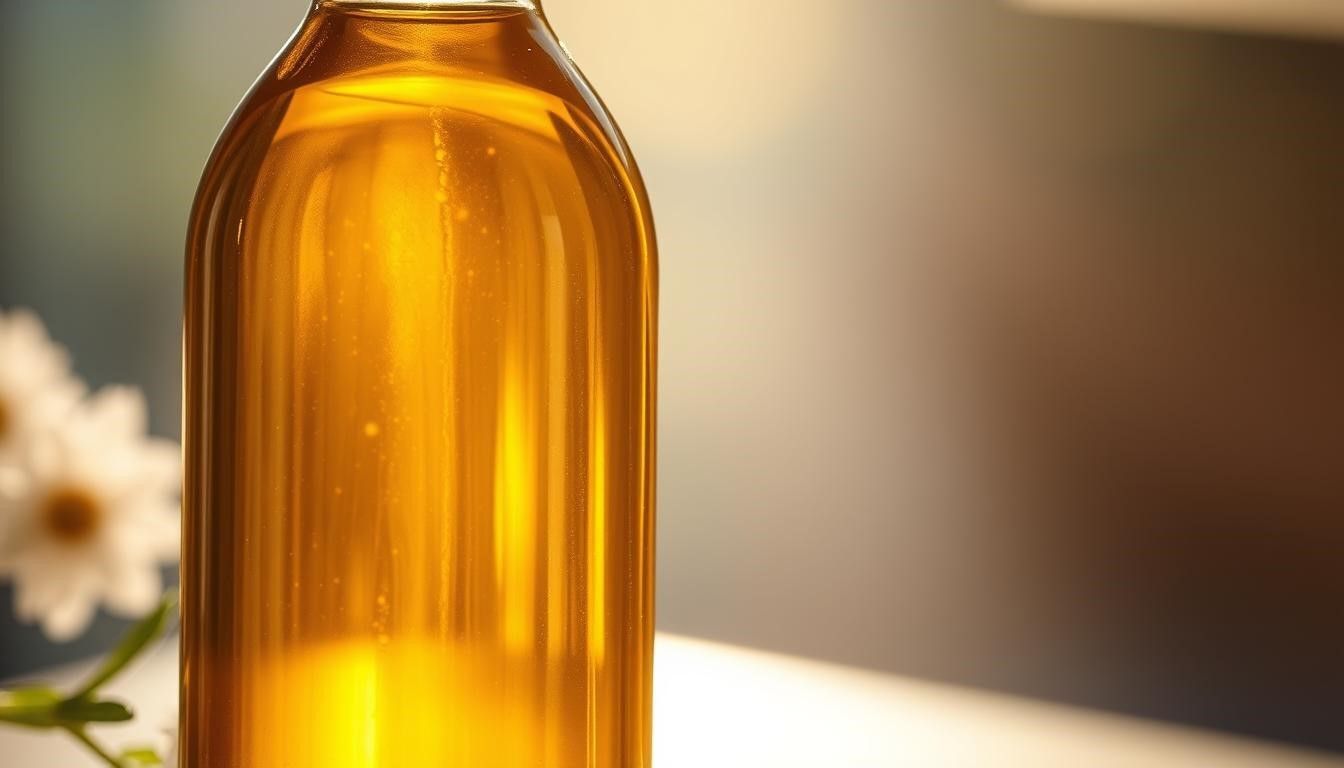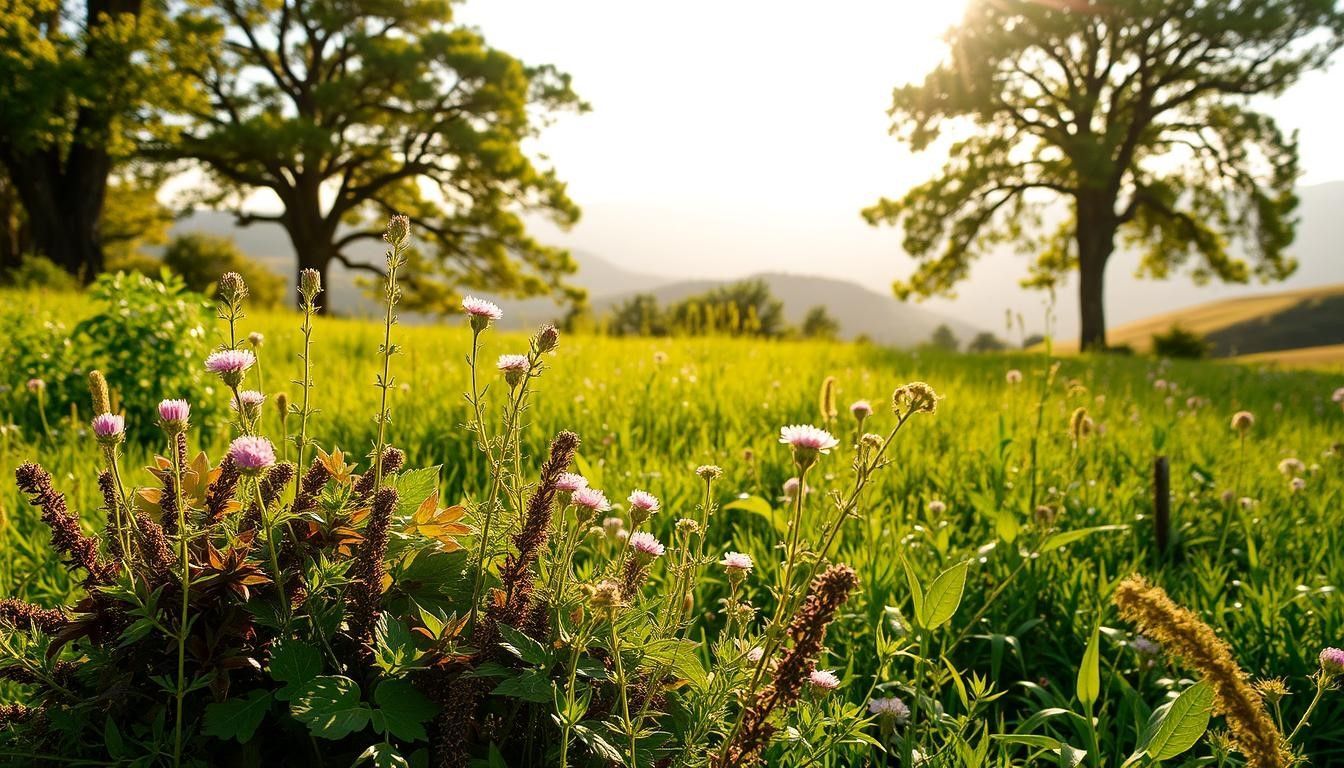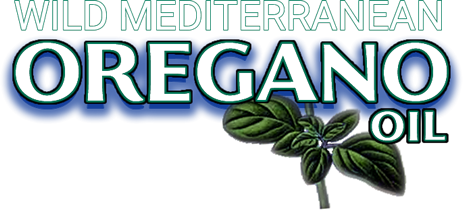Study: Oregano Oil as Potential Mosquito Larvicide
Oregano Oil: Mosquito Larvae Destroyer

Bouguerra, Nadia & Fouzia, Tine & Soltani, Noureddine. (2019). Oregano Essential Oil as Potential Mosquito Larvicides. Transylvanian Review. 27. 9612-9619.
Abstract
In view of residue problems in the environment and the development of insect resistance to synthetic insecticides like DDT and other chlorinated hydrocarbons, the recent trend is to explore plants to obtain extracts that are safe for non-target animals and do not pose any residue problem but are still able to suppress pest populationsMany studies on plant extracts against mosquito have been conducted around the world, and their larvicidal, pupicidal, adult emergence inhibition and repellent activities have been reported. Materials and Methods: In the present study, the objective was to assess the chemical composition of the essential oil obtained by hydrodistillation of dry leaves from Origanum vulgare by GC-FID and GC/MS analyses. The essential oil was tested at different concentrations ranging between 6.25 and 50 ppm on newly molted fourth-instar larvae of Culex pipiens, most abundant mosquito species in Tebessa area (East-Algeria) under standard laboratory conditions according to the World Health Organization recommendations. Results: The essential oil yield calculated from the dry matter of the aerial part of the plant was 1.71 %. The GC-MS analyzes revealed twenty-five compounds in essential oil of O. vulgare. The major chemical components identified was carvacrol (77.63%) (Phenolic monoterpene), followed by γ-terpinene (6.79%) and cymene (5.41%), respectively. Bioassay test revealed that this essential oil was found to exhibit a larvicidal activity with dose-response relationship. Conclusion: The relationship between the chemical composition and biological activity of essential oil of O. vulgare is confirmed by the above-mentioned results. Therefore, the potential for exploiting this essential oil, such as bioinsecticide for vector control, can be taken in to account.
Introduction
IntroductionMosquitoes are one of the most medically significantvectors; they transmit parasites and pathogens, which areresponsible for the spread of severe human diseases likedengue, Japanese encephalitis, filariasis, yellow fever,malaria and chikungunya (David et al. 2014 ; Benelli,2015).Culex pipiens(Diptera: Culicidae) are the mostwidely distributed species in Algeria (Rehimi & Soltani2002; Tine-Djebbar et al. 2016) and many countries in theworld (James, 1992) causings evere morbidity to man andanimals (El kady et al. 2008). The ideal method forcontrolling mosquito infestation is by preventing mosquitobreeding places in their larval stages aquatic (Rattanam etal. 2014). Mosquito controls, using synthetic chemicalinsecticides have adverse effects on the environment andalso cause growing of insecticide resistance in arthropods(Edrissian 2006; Khanavi et al. 2011). To halt proliferationof this arthropod and to improve quality of environmentand public health, more attention has been focused onbotanicals, which are effective, selective, biodegradable,ecofriendly, and inexpensive, and found one of the possiblealternatives to synthetic insecticides (Tapondjouet al.2005 ; Pavela, 2015). The phytochemicals derived fromplant resources can act as larvicides, insect growthregulators, repellents, and ovipositional attractants, havingdeterrent activities observed by different researchers(Rocha et al. 2015; El Akhal et al. 2015; 2016 ; Benelli et al.2016) and may be alternative sources of mosquito larvalcontrol agents, as they constitute a rich source of bioactivecompounds that are biodegradable into non toxic products(Sharma et al. 2006). A large number of plant essential oilsmay be potential sources of mosquito larvicides, due totheir complex mixtures of monoterpenoids and relatedphenols (Bandeira et al. 2013). Many plant essential oilshave been reported to possess insecticidal propertiesagainst mosquitoes (Bouguerra et al. 2017; Dris et al.2017a ; b ; Guenez et al. 2018). The genusOriganum(Lamiaceae), is rich in essential oils and bitter substances(Baytop 1999) comprises about 38 species widespread inthe Mediterranean, Euro-Siberian and Irano-Siberainregions (Kokkini 1996).O. vulgaresub species usuallyaccumulate large amounts of phenolic monoterpenes(Mechergui et al. 2010; Mancini et al. 2014). They have astrong antimicrobial (Basli et al. 2012 ; Rodrigues et al.2017), antifungal (Belhattab et al. 2004), antioxidant (Kouriet al. 2007; Mechergui et al. 2010), and insecticidalactivities (Khalfi et al. 2008). The purpose of the presentinvestigation was to determine chemical composition andlarvicidal activity of essential oil of AlgerianO. vulgareagainst fourth instar larvae ofC. pipiens, the mostabundant and interesting mosquito species in Algeriaparticularly in Tebessa area (Tine-Djebbar et al. 2016)
Materials and Methods
Mosquito Rearing
The larvae ofC. pipiens were obtained from a stockcolony of the laboratory of Applied Animal Biology andreared as previously described (Rehimi and Soltani, 1999).Each 20 larvae were kept in pyrex storage jar containing150 ml of stored tap water and maintained at temperature between 25-27°C. Larvae were daily fed with fresh food consisting of a mixture of Biscuit-dried yeast (75:25 byweight) (Rehimi & Soltani 1999) and water was replaced every three days.
Plant material and extraction of the essential oil
The fresh aerial parts of O. vulgare samples were collected during March and May 2016 from Tebessa (Setif)
(East-Algeria) and transported to laboratory. Dried leaves of the plants (about 100 g) were cut into small pieces and
hydrodistilled in a clevenger type apparatus for 3 h according to the method recommended in the British
Pharmacopoeia (1988). The obtained essential oil was dried with anhydrous sodium sulphate and storedat 4°C in
dark vials until tested by GC-MS. The yield of the oils was calculated based on dried weight of plant materials.
Gaschromatography-mass spectrometry analysis
Gas chromatography-mass spectrometry (GC-MS)analysis were performed with an HP Agilent 2890 plus gas chromatograph (GC) equipped with a HP-5MS column (a length of 30 m × internal diameter of 0.25 mm, and 0.25mm film thickness). The column oven temperature was set at 600C for 8 min, and then increased to 250◦C at rate of2◦C/min. The injector and detector temperatures were kept respectively at 250 and 270◦C. Carrier gas was helium, the flow through the column was1ml/min, and the split ratio was set to 50:1 with injection of 0.2 μl of oil sample (Table1). The GC/mass spectrometry (MS) analysis was performed with a Quadrupole mass spectrometer that operated at 70V. Constituent’s identification was based on comparison of retention times with those of corresponding reference standards using the NIST 02 and WILEY 7N libraries (Jennings & Shibamoto 1980) and by comparison of the retention index relatives to n-alkanes of the components with published data (Adams 2007). Percentage compositions of essential oils were calculated according to the area of the chromatographic peaks
Treatment and larvicidal activity
Bioassays were conducted as previously described (Boudjelida et al. 2005). The essential oil ofO. vulgare added to treatment beakers at different final concentrations. Newly ecdysed fourth-in star larvae of C.pipiens was exposed to the different concentrations (6.25,12.5, 25 and 50 ppm) for 24 hours in accord with WorldHealth Organization (WHO) criteria (Anonym 1983; WHO2005). Essential oil was dissolved in 1 ml ethanol, and then diluted in 150 ml of filtered tap water to obtain the desired final concentrations. The controls were prepared using 1ml of ethanol in 150 ml of water for positive controls andno additive with negative ones. After the exposure time of24 hours, larvae were removed, was hed with untreated water and placed in clean water. The test was carried out with 4 replicates each containing 20 larvae per concentration. Mortality was registered at 24, 48 and 72hours following treatment. Sub-lethal and lethal concentrations (LC25, LC50 and LC90), 95% confidence limits(95% CL), and slope of the concentration-mortality were calculated.
Statistical analysis
The number of individuals tested in each series is given with the results. Data are presented as the mean ±standard deviation (SD). The significance between different series was tested using Student’s t test. All statistical analyses were performed using MINITAB Software (Version 17, PA State College, USA) and Prism v6.01 for Windows (GraphPad Software Inc., www.graphpad). The significance level was set at a probability value lower than0.05.
As posted at ResearchGate
Results
Discussion
Extraction yield and chemical composition of essential oil
The essential oil isolated by hydro distillation from the aerial parts ofO. vulgare was found to be a pale yellow liquid, obtained in yield of 1.71% (Table 2).The GC-MS analysis resulted in the identification of twenty-five compounds, representing (99.86%) of the total detected constituent’s essential oil. The percentages and the retention time of identified compounds were summarized in Table 3. The essential oil of O. vulgare was rich in carvacrol (77.63 %), followed by γ-terpinene and cymene with lower percentage (6.79 % and 5.41 %) respectively.
Insecticidal activity
Toxicity of oil from O. vulgareto 4th in star C. pipiens larvae was noted. The sublethal (LC25) and lethal (LC50 and the CL90) concentrations and their 95% fiducial limits (FL)are determined using Graph Pad Prism 6 software. The data are presented in Table 5. The results of this investigation clearly indicate that by increasing concentrations, the rate of mortality increases (Table 4).After treatment, intoxicated larvae showed a change in their behavior by sinking to the bottom of the jar until they died.
Extraction yield and chemical composition of essential oil
The obtained yield in our experiments is the same yield that obtained from a species of Indian country is around 1.7% (Pimple et al.2012). This yield is high compared to those found in other research;O. major anacultivated in Morocco with 0.8% (El-Akhal et al. 2014). InTunisia, it varied between 0.04 to 0.09 % (Sellami et al.2009). In our study, the GC-MS analysis resulted in the identification of twenty-five compounds, representing(99.86%) of the total detected constituent’s essential oil.The essential oil ofO. vulgare was rich in carvacrol (77.63%), followed by γ-terpinene and cyméne with lower percentage (6.79 % and 5.41 %) respectively. Chemical analysis ofO. vulgare by other authors (Daferera et al.2003; Kim et al. 2010; Govindarajan et al. 2016) also showed that the main constituents of this oil are phenols: carvacrol and thymol. The high level of carvacrol has been reported in other species of oregano. While, Belhatteb et al.(2005) found that the EO ofO. glandulosum grown in Setif (East Algeria) contains 29 compounds and the majorcomponents were carvacrol (47 %), followed by g-terpinene(13.4 %), p-cymene (11.2 %) and thymol (6.6 %), respectively. There are several factors responsible for this variability, the most important of which are the climate, the soil, the harvest period, age, vegetative cycle stage, and the method of conservation and extraction (Abu Lafi etal. 2008; Zein et al. 2011). Genetic factors and the vegetative cycle also take part in this chemical diversity ofthe volatile oils ofOriganum vulgare
Insecticidal activity
In this study, our findings indicate that O. vulgare EOs present an interesting larvicidal activity against C.pipiens. Recently, Govindarajan et al. (2016) found that essential oils ofO. vulgare exhibited significant larvicidal activity against mosquito vectorsAn. stephensi,An.subpictus,C. quinquefasciatusandC. tritaeniorhynchus.Thus, the EOs of EurasianO. vulgare have been also found to have a greater larvicidal activity against mosquito Culexsp; the LC50 and LC90 obtained were 256 and 500 mg/l respectively (Pavela et al. 2008). Similar studies have been done on different species of Origanum against C. pipiens larvae (Traboulsi et al. 2002; Cetin et al. 2006; El-Akhal et al. 2014), which revealed a variation in lethal concentrations such asO. syriacum (LC50: 16 - 89 mg/l); O.majorana (LC50 and LC90 : 258.71 and 580.49 μg/ml respectively) ;O. onites (LC50 : 24.8 and LC90 : 61.3 ppm) andO. minutiflorum (LC : 73.8 and 118.9 ppm). In addition, previous studies on other Lamiaceae species are in agreement with our study. Guenez et al. (2018) found that the Mentha pulegium essential oil exhibits a larvicidal activity against Aedes caspius and C. pipienslarvae; while Dris et al. (2017a,b) showed the insecticidal activity of Ocimum basilicum and Lavandula dentata essential oils against the fourth in star larvae of C. pipiens. In the other study of Bouguerra et al. (2017), the larvicidal activity o fthe essential oil extracted fromThymus vulgaris against the same species of mosquito have examined and the lethal concentrations show a variations according to the periods after treatment : 24 , 48 and 72h (LC50: 72.04; 68.61and 62.12ppm and LC90: 207.01 ; 190.54 and 169.82 ppm).Many EOs were reported effective againstC. pipiens larvae. Thus, volatile oils fromT. broussonetti and T.maroccanus species showed an effective toxicity against C.pipiens larvae with LC50 and LC90 values (0.23 ppm - 0.76ppm) and (0.31 ppm - 1.53 ppm) respectively (Belaqziz etal. 2010) and from Kelussia odoratissimamozaffarian applied to C. pipiens and An stephensi(2.69 and 7.90 ppm) respectively (Vatandoost et al. 2012). Several factors affect the bioactivity of EOs including plant species (variety), cultivating conditions, maturation of harvested plants, plant storage, plant preparation and methods of extraction (Tawatsin et al. 2006)
Overall, this research adds knowledge to develop newer and safer natural insecticides against mosquito. In conclusion, our finding indicate that O. vulgare essential oils with carvacrol phenolic mono terpene (77.63%) as major compound possess larvicidal activity against C.pipiens larvae. Most importantly, this essential oil can reduce the development of resistance by various mosquito species and to improve quality of environment and public health
Conclusion
Author Contributions
All authors are equally contributed to this study.Bouguerra Nadia, Tine-Djebbar Fouzia and SoltaniNoureddine, designed and carried out the experimentalstudy. Tine-Djebbar Fouzia analysed data. Tine-DjebbarFouzia, Bouguerra Nadia and Soltani Noureddine wrote themanuscript. All authors approved the manuscript.
Conflicts of Interest
Pr TINE-DJEBBAR F has received research grantsfrom Ministry of High Education and Scientific Research ofAlgeria (CNEPRU project, grant numberD01N01UN120120130005).Pr. SOLTANI N is a headmaster of Laboratory ofApplied Animal Biology, University of Badji mokhtar,Annaba.BOUGUERRA N declares that she has no conflict ofinterest.
Acknowledgments
This work was supported by the National Fund forScientific Research to Pr. N. SOLTANI (Laboratory ofApplied Animal Biology) and the Ministry of HighEducation and Scientific Research of Algeria (CNEPRUProject to Dr. F. TINE-DJEBBAR).
References
- Abu Lafi,S., Odeh, I., Dewik, H., Qabajah, M., Hanus, L.O., Dembitsky, V.M., 2008.Thymol and carvacrol production from leaves of wild Palestinian Major anasyriaca. Bio resource Technology. 99, 3914–3918.
- Adams, R.P.,2007. Identification of essential oil components by gas chromatograph/mass spectrometry 4th ed.Carol Stream, USA: AlluredPublishing Corporation.
- Anonym., 1983. Informal consultation on insect growth regulators, WHO/VBC/83.
- Bandeira, G.N., Augusto Gomes da Camara, C., Martins de Moraes, M., Barros, R., Muhammad,S., Akhtar, Y.,2013. Insecticidal activity of Muntingia calabura extracts against larvae and pupae of diamond back, Plutella xylostella (Lepidoptera, Plutellidae). Journal of King Saud University Science.25, 83–89.
- Basli, A., Chibane, M., Madani, K., Oukil, N., 2012. Activité antibactérienne des polyphénols extraits d’une plante médicinale de la flore d’Algérie: Origanumglandulosum Desf.Phytothérapie. 10, 2–9.
- Baytop, T., 1999. Therapy with Medicinal Plants in Turkey; Today and in Past. Istanbul University. Press, Istanbul. Belaqziz, R., Harrak, R., Romane, A., Oufdou, K., El Alaoui El Fels, M.A., 2010.Antimicrobial and Insecticidal Activities of the EndemicThymus broussonetti Boiss. and Thymus maroccanus Ball. Records of NaturalProducts. 4, 230–237.Belhattab, R., Larous, L., Kalantzakis, Y., Boskou, D.,Exarchou, V., 2004. Anti fungal properties of Origanumg landulosum Desf Extracts. Journal of FoodAgriculture and Environment.2, 69–73.
- Belhattab, R., Larous, L., Figueiredo, A., Santos, P.A.G.,Barroso, J.G., Pedro, L.G., 2005. Origanumg landulosum Desf.grown wild in Algeria: essential oil composition and glycosidic bound volatiles. Flavour and Fragrance Journal. 20 (2), 209–212.
- Benelli, Giovanni., 2015. Research in mosquito control:current challenges for a brighter future. Parasitology Research. 114 (8),2801–2805.
- Benelli, G., Pavela, R., Canale, A., Mehlhorn, H., 2016. Tick repellents and acaricides of botanical origin: a greenroad map to control tick-borne diseases?. ParasitologyResearch.115 (7), 2545–2560.
- Boudjelida, H., Bouaziz, A., Soin,T., Smagghe, G., Soltani, N.,2005. Effects of ecdysone agonist halofenozideagainstCulex pipiens. Pesticide Biochemistry andPhysiology. 83(2/3), 115–123.
- Bouguerra,N., Tine-Djebbar, F., Soltani, N., 2017.AlgerianThymus vulgaris essential oil: chemical composition and larvicidal activity against the mosquito Culexpipiens. International Journal of Mosquito Research.4 (1), 37–42.
- British pharmacopoeia (1988) London: HMSO 2: A137–A138.Cetin, H., Yanikoglu, A.,2006. A study of the larvicidal activity of Origanum (Labiatae) species from southwest Turkey. Journal of vector ecology. 31,118–122.
- Daferera, D.J., Ziagos, B.N., Polissiou, M.G., 2003. The effectiveness of plant essential oils on the growth ofBotrytis cinerea, Fusarium sp. and Clavibactermichiganensis subsp.michiganensis. Crop Protection.22, 39–44.
- David, J.P., Faucon F., Proust, A. C., Poupardin, R., Riaz, M.A., Bonin, A., Navratil, V., and Stéphane., 2014.Comparative analysis of response to selection withthree insecticides in the dengue mosquito Aedesae gyptiusing mRNA sequencing. BMC Genomics.15, 174.
- Dris, D., Tine-Djebbar, F., Soltani, N., 2017 a. Lavanduladentata essential oils: chemical composition and larvicidal activity against Culiseta longiareolataand Culex pipiens (Diptera: Culicidae). AfricanEntomology . 25(2), 387-394.
- Dris, D., Tine-Djebbar, F., Bouabida, H., Soltani, N., 2017 b.Chemical composition and activity of an Ocimum basilicum essential oil on Culex pipiens larvae:T oxicological, biometrical and biochemical aspects.South African Journal of Botany. 113, 362-369.
- Edrissian, G.H., 2006. Malaria in Iran: Past and PresentSituation. Iranian Journal of Parasitology. 1(1),1-14.
- El-Akhal, F., El Ouali Lalami, A., Ez Zoubi, Y., Greche, H., Guemmouh, R., 2014. Chemical composition and larvicidal activity of essential oil of Origanum majorana (Lamiaceae) cultivated in Morocco againstCulex pipiens (Diptera: Culicidae). Asian pacific journal of tropical biomedicine.4, 746-50.
- El Akhal, F., Greche, H., Ouazzaui, C.F., Guemmouh, R., ElOuali Lalami, A., 2015. Chemical composition and larvicidal activity ofCulex pipiens essential oil of Thymus vulgaris grown in Morocco. Journal ofMaterials and Environmental Science. 1, 214-9.
- El Akhal, F., Guemmouh, R., Maniar, S., Taghzouti, K. and El Ouali Lalami, A., 2016. Larvicidal activity of essential oils of Thymus vulgaris and Origanum majorana (Lamiaceae) against of the malaria vectorAnopheles labranchiae (Diptera: Culicidae).International Journal of Pharmacy andPharmaceutical Sciences. 8(3), 372-376.
- EL Kady, A.G., Kamel, H.N., Mosleh, Y.Y., Bahght, I.M.,2008. Comparative Toxicity of Two Bio-Insecticides (Spinotoram and Vertemic) Compared with Methomyl against Culex pipiens and Anopheles multicolor.World Journal of Agricultural Sciences.4 (2), 198-205.
- Govindarajan, M., Rajeswary, M., Hoti, S.L., Benelli, G.,2016. Larvicidal potential of carvacrol and terpinen-4-ol from the essential oil ofOriganum vulgare
- Nadia Bouguerraet al.9618(Lamiaceae) againstAnopheles stephensi,Anophelessubpictus,Culex quinquefasciatusandCulextritaeniorhynchus(Diptera: Culicidae). Research inVeterinary Science.104, 77-82.
- Guenez, R.,Tine-Djebbar, F., Tine, S., Soltani, N., 2018.LarvicidalefficacyofMenthapulegiumessentialoilagainstCulex pipiensL. andAedescaspiusP. larvae.World Journal of Environmental Biosciences. 7 (1), 1-7.
- Jennings, W., Shibamoto, T., 1980.Qualitative analysis offlavour and fragrance volatiles by glass–capillary gaschromatography. New York: Academic Press.
- Khalfi, O., Sahraoui, N., Bentahar, F., Boutekedjiret, C.,2008. Chemical composition and insecticidalproperties ofOriganum glandulosum(Desf.) essentialoil from Algeria. Journal of the Science of Food andAgriculture.88, 1562–1566.
- Khanavi, M., Bagheri-Toulabi, P., Abai,M.R., Sadati, N.,Hadjiakhoondi, F., Hadjiakhoondi, A.,Vatandoost, H.,2011. Larvicidal activity of marine algae,SargassumswartziiandChondria dasyphylla, against malariavector,Anopheles stephensi. Journal of Vector BorneDiseases.48, 241–244.
- Kim, S.I., Yoon, J.S., Jung, J.W., Hong, K.B., Ahn, Y.J., Kwon,H.W.,2010. Toxicity and repellency ofOriganumessential oil and its components againstTriboliumcastaneum(Coleoptera: Tenebrionidae) adults.Journal of Asia-Pacific Entomology. 13, 369–373.
- Kokkini, F., 1996.Taxonomy, diversity and distribution ofOriganumspecies. In Proceedings of the IPGRIInternational Workshop onOregano. Valenzano:Padulosi Ed.
- Kouri, G., Tsimogiannis, D., Bardouki, H., Oreopoulou,V.,2007. Extraction and analysis of antioxidantcomponents fromOriganum dictamnus. InnovativeFood Science & Emerging Technologies. 8, 155-162.
- Mancini, E., Camele, I., Elshafie, H.S., De Martino, L.,Pellegrino, C., Grulova, D., DeFeo, V., 2014. Chemicalcomposition and biological activity of the essential oilofOriganum vulgaressp. Hirtum from different areasin the Southern Apennines(Italy). Chemistry &Biodiversity.11, 639-651.
- Mechergui, K., Coelho, J.A., Serra, M.C., Ben Lamine, S.,Boukhchina, S., Khouja, M.L., 2010. Essential oils ofOriganum vulgare L. subsp. Glandulosum(Desf.)Ietswaart from Tunisia: chemical compositionand antioxidant activity. Journal of the Science ofFood and Agriculture. 90, 1745-1749.
- Pavela, R., 2008. Larvicidal effects of various Euro-Asiaticplants againstCulex quinquefasciatusSay. larvae(Diptera: Culicidae). Parasitology Research. 102,555-559.
- Pavela, R., Vrchotová, N., Tříska, J., 2009. Mosquitocidalactivities of thyme oils (Thymus vulgarisL.) againstCulex quinquefasciatus(Diptera: Culicidae). Journalof Parasitology Research.105, 1365-70.
- Pavela, R., 2015. Essential oils for the development of eco-friendly mosquito larvicides: A review mIndustrial Crops and Products. 76, 174-187.
- Pimple, B.P., Patel, A.N., Kadam, P.V., Patil, M.J., 2012.Microscopic evaluation and physicochemical analysisof Origanum majorana Linn leaves. Asian Pacific Journal of Tropical Disease.2: S897-S903.
- Rattanam, A.R., Wan, F.Z., Maniam, T., Sreeramanan, S.,Jeevandran, S., 2014. Larvicidal efficacy of differentplant parts of railway creeper,Ipomoea cairicaextractagainst dengue vector mosquitoes,Aedes albopictus(Diptera: Culicidae) andAedes aegypti(Diptera:Culicidae). Journal of Insect Science.14,(180) DOI:10.1093/jisesa/ieu042.
- Rehimi, N., Soltani, N., 1999. Laboratory evaluation ofAlsystyn, a chitin synthesis inhibitor, againstCulexpipiensL. (Dip., Culicidae): effects on developmentand cuticle secretion. Journal of Applied Entomology.123, 437-441.
- Rehimi, N., Soltani, N., 2002. Laboratory evaluation ofandalin, an insect growth regulator interfering withcuticle deposition, against mosquito larvae. Sciences& Technologie.18,106 -110.
- Rocha, D., Novo, M., Matos, O., Figueiredo, A.C., Delgado,M., Cabral, M.D., Liberato, M., Moiteiro, C., 2015.Potential ofMentha pulegiumfor mosquito control.Revista de Ciências Agrárias. 38 (2), 155-65.
- Rodrigues, J. B. S., Carvalho, R. J., Souza, N.T., Oliveira,K.S., Franco, O.L., Schaffner, D., Souza, E.L., Magnani,M., 2017. Effects of oregano essential oil andcarvacrol on biofilms ofStaphylococcus aureusfromfood-contact surfaces.Food Control. 73 (B), 1237-1246.
- Sellami, I.H., Maamouri, E., Chahed, T., Wannes, W.A.,Kchouk, M.E., Marzouk, B., 2009. Effect of growthstage on the content and composition of the essentialoil and phenolic fraction of sweet marjoram(Origanum majoranaL.). Industrial Crops andProducts.30, 395-402.
- Sharma,P., Mohan, L., Srivastava, C.N. 2006. Phytoextract-induced developmental deformities in malaria vector.Bioresource Technology. 97 (14), 1599-1604.
- Tapondjou, A.L., Adler, C., Fontem, D.A, Bouda, H.,Reichmuth, C., 2005. Bioactivities of cymol andessential oils ofCupressussemperviensandEucalyptussalginaagainstSitophiluszeamaisMotschulsy andTriboliumconfusumdu val. Journal of Stored ProductsResearch. 41,91-102.
- Tawatsin, A., Asavadachanukorn, P., Thavara, U.,Wongsinkongman, P., Bansidhi, J., Boonruad, T.,Chavalittumrong, P., Soonthornchareonnon, N.,Komalamisra, N., Mulla, M.S., 2006. Repellency ofessential oils extracted from plants in Thailandagainst four mosquito vectors and ovipositiondeterrent effects againstAedes Aegypti. SoutheastAsian Journal of Tropical Medicine and Public Health.37(5), 915–931.
- Nadia Bouguerraet al.9619
- Tine-Djebbar, F., Bouabida, H., Soltani, N.,2016. Répartitionspatio-temporelle des Culicidés dans la région deTébessa. Editions Universitaires Européennes,ISSN/ISBN:978-3-639-50856-7.
- Traboulsi, A.F., Taoubi, K., El-Haj, S., Bessiere, J.M.,Rammal, S., 2002. Insecticidal properties of essentialplant oils against the mosquitoCulex pipiensmolestus(Diptera: Culicidae). Pest ManagementScience. 58, 491-495.
- World Health Organization., 2005. Guidelines forLaboratory and Field Testing of Mosquito Larvicides.Communicable Disease Control, Prevention andEradication, WHO Pesticide Evaluation Scheme. WHO,Geneva (WHO/CDS/WHOPES/GCDPP/1.3)
- Vatandoost, H., Sanei Dehkordi, D.A., Sadeghi, S.M.T.,Davari, B., Karimian, F., Abai, M.R. andSedaghat,M.M., 2012.Identification of chemical constituentsand larvicidal activity ofKelussia odoratissimaMozaffarianessential oil against two mosquitovectorsAnopheles stephensiandCulex pipiens(Diptera: Culicidae).Experimental Parasitology .132(4), 470-474.
- Zein,S., Awada, S., Rachidi, S., Hajj, A., Krivoruschko, E.,Kanaan, H.,2011. Chemical analysis of essentialoilfromLebanesewild andcultivatedOriganumsyriacumL. (Lamiaceae) beforeand after flowering. Journal of Medicinal PlantsResearch. 5, 379-387.
Bouguerra, Nadia & Fouzia, Tine & Soltani, Noureddine. (2019). Oregano Essential Oil as Potential Mosquito Larvicides. Transylvanian Review. 27. 9612-9619.



